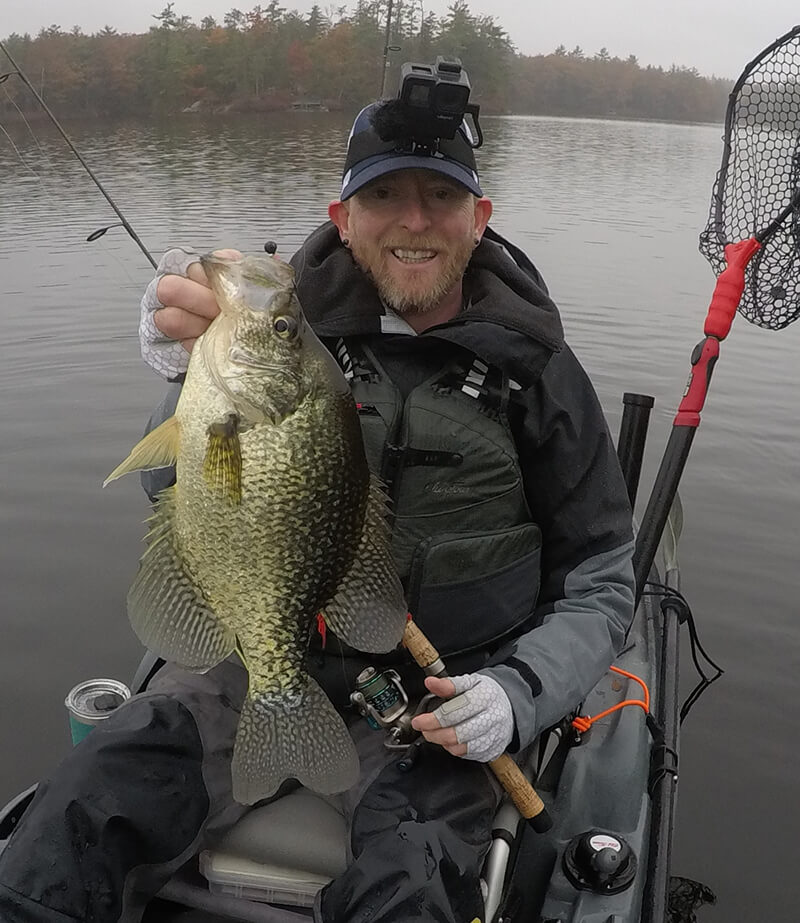The Best Fishing Line For Kayak Anglers
By: Tim Moore
"What type of fishing line do you recommend?" Is a question I am asked at every seminar I give, and during about a third of my guide trips. There are so many fishing line choices out there that choosing one can be downright confusing. One walk down the line aisle at your local fishing retailer is enough to make your head spin. "Is braid better than monofilament?" or "Why would you use a fluorocarbon leader?" are just a couple important questions that deserve answering. For most kayak anglers, which type of line is best depends on how they fish, where they fish, and what they fish for. Here is a little insight into some of my thinking about various line types, and why I choose them.
THE MOST COMMON KAYAK FISHING LINES
The most common lines used are monofilament, copolymer, fluorocarbon, and braided line.
MONOFILAMENT
Monofilament line is a single strand of nylon which is extruded into specific diameters. It is undoubtedly the most common line used and is a great all-purpose line due to its strength, flexibility, and abrasion resistance. Monofilament line absorbs water and becomes slightly softer and stronger as you use it, making it a great option for trolling and casting lures in shallow water. The amount of stretch in monofilament line is a double-edged sword. Too much stretch can cost you sensitivity and adequate hook-setting power, making monofilament a poor choice for deep water jigging. However, that stretch can work in your favor when a bit of shock absorption is needed, like when fishing for big black crappie. If your line is too stiff and has little to no stretch, you can easily tear lures through the soft mouths of black crappie, costing you proper hook sets when they matter most.
COPOLYMER
Copolymer line is monofilament coated with another material, usually fluorocarbon. It is more abrasion resistant, has less stretch, better knot strength, and is usually thinner than monofilament. Copolymer also sinks, more so than monofilament, making it a great line to use if you are jigging around rocks or when using deep diving crank baits, but not so good for fishing top water lures because will pull your lure under the water making it less effective.
FLUOROCARBON
Fluorocarbon is highly desired because it has almost the same refractive index as water and therefor almost completely disappears underwater. It also has thinner diameter and lower stretch than monofilament. Fluorocarbon is a great line to use when fish are line-shy or when fishing in very clear water. While most fluorocarbon is very abrasion resistant, if it does get nicked it is almost guaranteed to break at the nick when put under the maximum amount of strain it can handle. That said, it is the clear choice (pun intended) for lakes such as Lake Winnipesaukee or Squam Lake.
BRAID
Braided line is my preferred line in almost every situation. Braided line is much thinner, but much stronger than nylon line. Its thin diameter increases castability. Braid also has zero stretch which increases sensitivity and hook sets, especially when fishing in deep water. You can also add a section of whatever type and length of leader best fits the type and fishing you are doing that day. Braid is susceptible to wind knots though. If you don't pay attention when casting, a loop can form in the spool causing terrible knotting that is daunting, and sometimes impossible, to get out. Braid is a particularly good option for long distance casting, as the thinner diameter allows most lures to cast farther than with monofilament or fluorocarbon. It is also typically the top choice for vertical jigging since its thin diameter reduces drag in the water and the lack of stretch allows the angler to feel bites in deep water. My favorite braided line is Daiwa J Braid X8 Grand.
Knowing what your line is made of and how it acts in water can make your choice much easier. If you want to go crazy there are choices upon choices, and line manufacturers are more than happy to accommodate. Choosing specific lines for specific types of fishing is just one piece of the puzzle, but it just might be the most important one, as your line is the link between your rod and your lure. Remember that fishing line is extremely hazardous to wildlife. It can cause serious injury or even death so make sure you clean up any used fishing line that you see.

Tim Moore is a full-time licensed New Hampshire fishing guide and owner of Tim Moore Outdoors, LLC. He offers guided fishing trips on Lake Winnipesaukee and kayak trips for striped bass. He is a member of the New England Outdoors Writers Association and the producer of Tim Moore Outdoors TV. For information on guided trips visit www.TimMooreOutdoors.com. You can also follow TMO on Facebook at www.Facebook.com/TimMooreOutdoors.
Tim's Gear:
Old Town Sportsman Bigwater PDL 132






